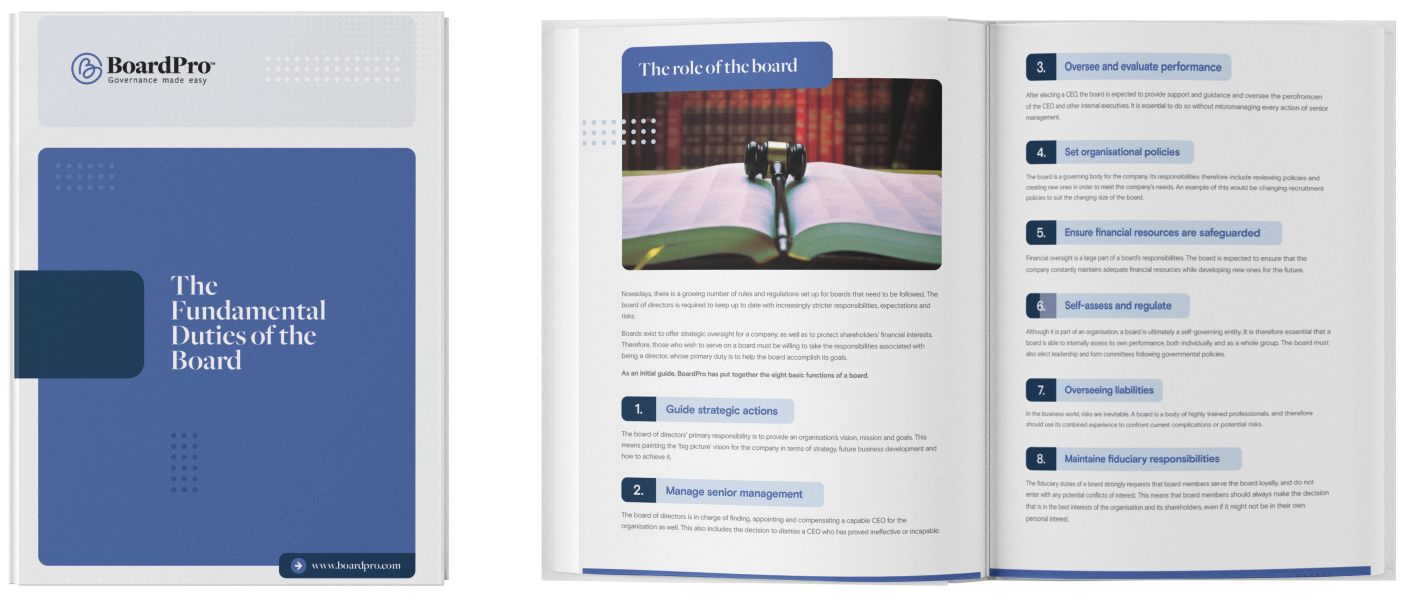The fundamental duties of the board
Nowadays, there is a growing number of rules and regulations set up for boards that need to be followed. The board of directors is required to keep up to date with increasingly stricter responsibilities, expectations and risks.
Boards exist to offer strategic oversight for a company, as well as to protect shareholders’ financial interests. Therefore, those who wish to serve on a board must be willing to take the responsibilities associated with being a director, whose primary duty is to help the board accomplish its goals.
As an initial guide, BoardPro has put together the eight basic functions of a board.

Get Your Free Copy
#1 Highest User Adoption Board Management Software
What Our Customers Say on G2
"We use BoardPro for all our meetings and not only is it easy for us, it's proven to be easy to navigate with our not so tech savvy members as well! It's organized, it looks amazing when auditors need to confirm our minutes, and it's just THAT useful. All around amazing!"
Ericka P
Secretary, Small-Business (50 or fewer emp.)
"This is an excellent board tool. Mobility, no paper, ease of navigation, brilliant note options. The ability to quickly find previous papers and minutes is also very helpful for accountability."
Paul M
Chairman, Mid-Market (51-1000 emp.)
"BoardPro has proven itself indispensable. The structured approach makes it easy to compile agendas and Board packs and then use this same structure for creating well-organised minutes. Being able to search for previous decisions and minutes, as well as easily keep tabs on actions is fantastic. The reminders that BoardPro sends out keep everyone on task, without the Board Secretary needing to be too involved."
Virginia C
Board Secretary, Mid-Market (51-1000 emp.)
Staying at the top of your professional game! In the past, preparations for Board meetings were a nightmare as there were always literally mountains of paperwork to prepare, photocopy and share with Board members. This was such a tedious task, not to mention not great for the environment. Now, with BoardPro, all meeting documents are virtual and there is no longer any need for photocopying and wasting so much paper. This has cut our meeting cost down significantly.
Arieta D
Human Resource & Compliance, Small-Business (50 or fewer emp.)
Completely changed our board meetings! The software drastically improves organization of documents and communication before and after meetings. It gives us a central place for recording and reviewing minutes. We use the action items feature extensively, which automates everything so nothing slips through the cracks. The technical support is impressive.
Peter K
President, Mid-Market (51-1000 emp.)






